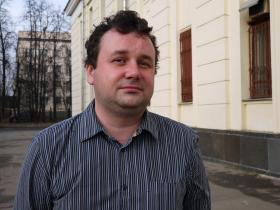Physicists from the OEPVAYa Department in collaboration with Jefferson Lab (USA) for the first time provided detailed information on exclusive meson photo and electroproduction at the intermediate energies.
"We are conducting these studies in order to explore the evolution of strong interaction in the transition from high to lower energies. I reported the results from these studies at October Meeting of American Physical Society" said Senior Staff Scientist, Dr. E.Isupov.
Particular feature of the experiments with the CLAS detector is the capability to reconstruct the types and the four-momenta of all particles in the final states. Before the CLAS detector was put in operation, such fully exclusive measurements were not possible. The unique characteristics of the CLAS detector in combination with continuous electron beam of CEBAF accelerator make possible fully exclusive measurements of different photo and electroproduction channels for the first time. The CLAS detector consist of six spectrometers with superconducting magnet. It provides typical energy/momentum resolution of ~3-4% offering the full coverage of the final state phase space.
"Our group is conducting the studies of charged double pion production channels. This channel has the particular sensitivity to high lying nucleon resonances which decay preferentially to this final state. Also this channel is promising for the "missing" baryon state search, which are predicted based on general symmetry principles of the quark models, but so far they escape detection in experiments" said Dr. Isupov.
The studies of strong interaction at the intermediate energies represents one of the most challenging task of hadron physics. Recently discovered Higgs boson account just for mass of fundamental elementary particles, while non-perturbative strong interaction at the distances ~10-13 cm is responsible for around 99% of the proton mass.

